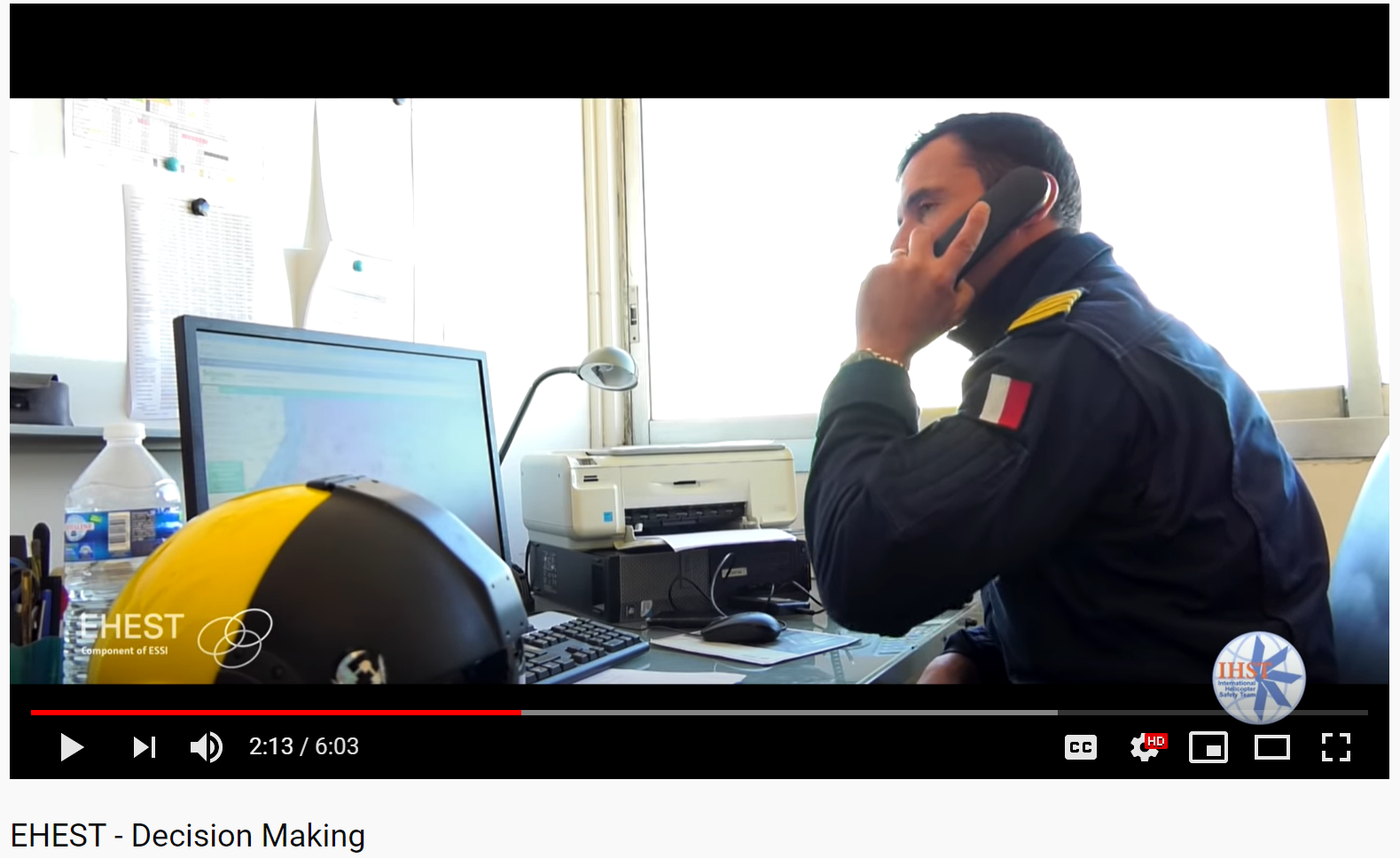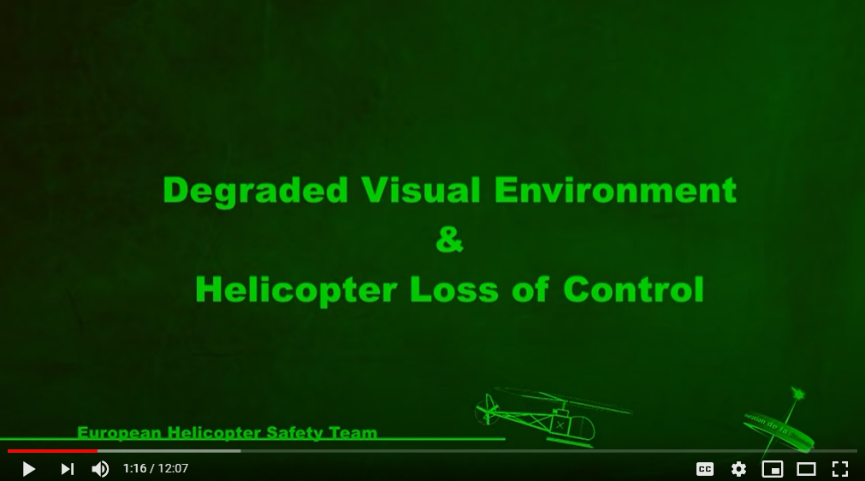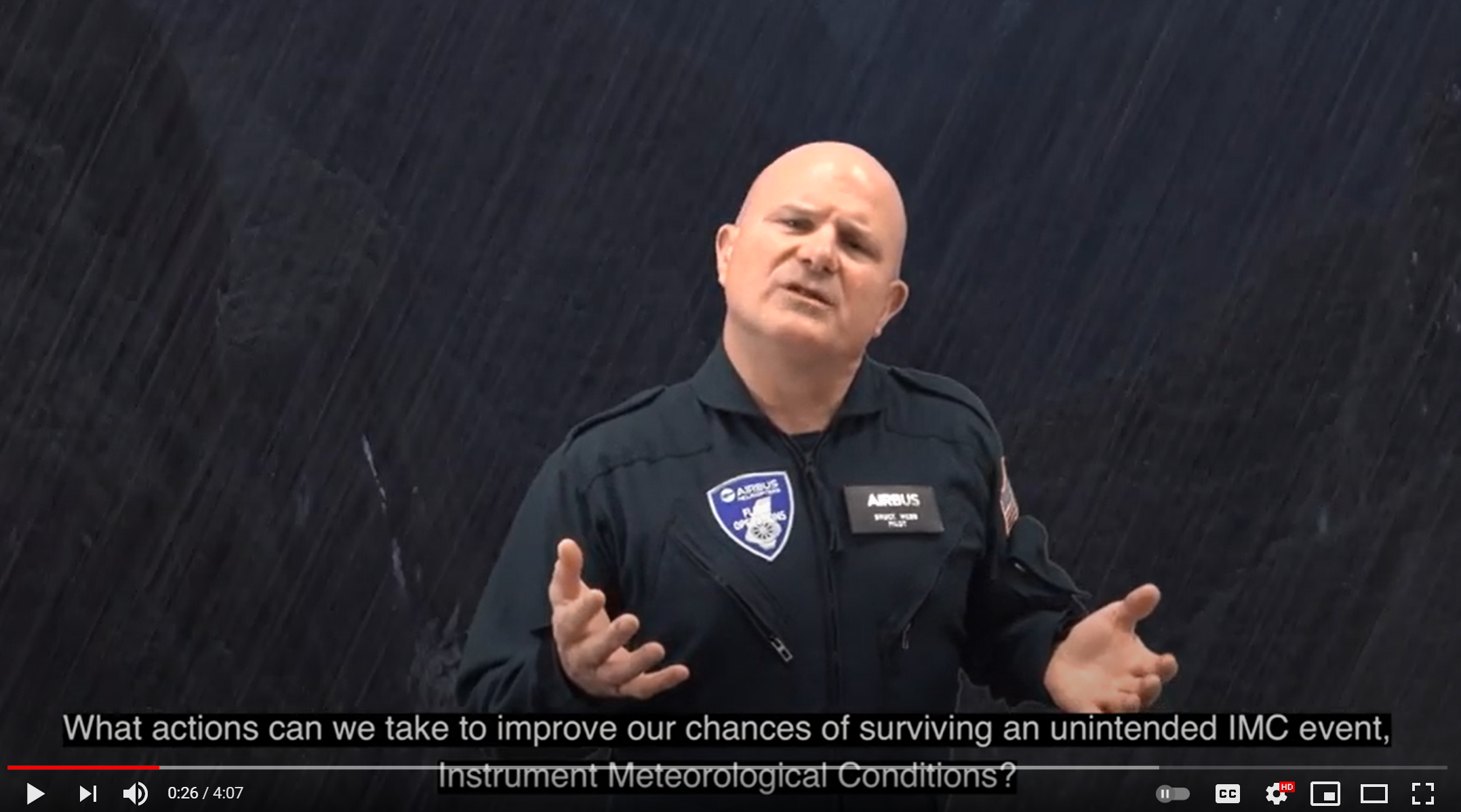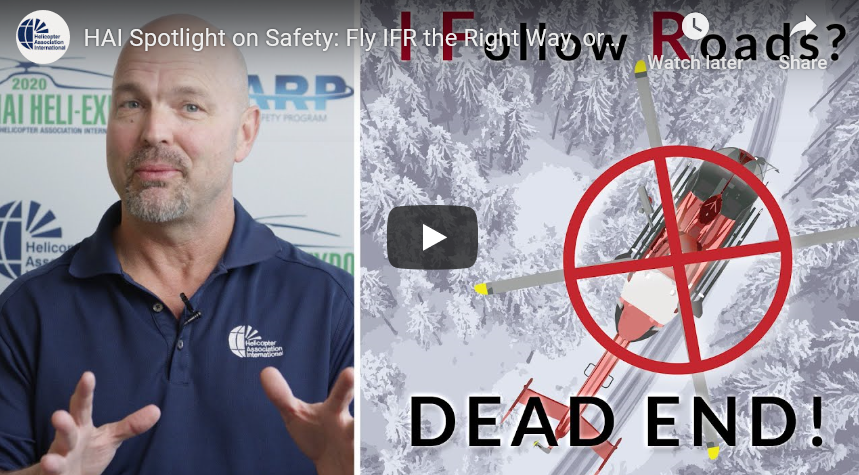This article is for helicopter pilots who normally fly IFR and complements the recently published Weather Threats for VMC Flights article. There are many benefits to flying under Instrument Flight Rules (IFR) and you will learn more about the advantages and challenges of flying IFR for helicopter pilots. Beware however: even flying IFR, weather remains a killer! When the weather in menacing, the safest approach remains to cancel or postpone the flight!
Edited March 31, 2021
Consider applying for a pilot Instrument Rating (IR) licence
One way to address the risks related to flying VFR in poor weather or Degraded Visual Environment (DVE) is to apply for a pilot Instrument Rating (IR) Helicopter. EASA Sunny Swift - Issue 11 Easier and safer flying in IFR for instance, illustrates some typical advantages of flying IFR for fixed wing GA pilots. They will be presented and enriched below. There is no fun in scud running under poor weather hoping that things will improve as terrain closes in. Having an IFR rating gives you far more options as a pilot.
Some advantages of flying under IFR
Flying under IFR increases the safety margins in poor weather conditions and reduced visibility. Here are some of the main advantages:
- Flying under IFR allows flying above lower airspace (uncontrolled), from the ground to approximately 3000 ft. The lower airspace is busy with all kinds of traffic bringing a risk of Mid-Air Collision (MAC). Besides, Low Altitude (LALT) Operations pose the risks of Controlled Flight into Terrain (CFIT) and of collision with cables, wire guides, towers, antenna, buildings, etc. Refer for instance to the EASA article Cable Collisions and the EASA animated video on Helicopter Wire Strike Avoidance.
- In addition to traffic congestion, the lower airspace is also more complex to manage, with various controlled and restricted airspaces, sometimes in a complicated arrangement. This can result in Airspace Infringements (AI) and in the worst-case scenario, in Mid-Air-Collision accidents. Refer for instance to the EASA Airspace Infringement campaign for GA pilots where you can find more information about this challenge.
- If the traffic is dense below 3000 ft and jetliners usually fly in the upper airspace (approximately above FL 120), in the middle there are often clear skies, far less traffic and better radio reception.
- Flying higher above 3000ft in controlled airspace is safer because separation is provided by ATC. Navigation is also simpler, as the pilot simply follows ATC instructions.
- Flying higher also gives more time to react in case of an emergency and chose an emergency landing space.
Note: Because of the very nature of certain helicopter operations such as Special Operations (SPO) also referred to as Aerial Work (AeW), or Helicopter Emergency Medical Services (HEMS) for instance, it isn’t however always possible to fly above 3000 ft.
- The main advantage of getting a pilot Instrument Rating (IR) Helicopter is equally valid for helicopter pilots: acquiring the competences needed to fly on instruments, which turns to be particularly useful when visual conditions deteriorate.
Prevention
Even if you are IFR qualified avoid entering Instrument Meteorological Conditions (IMC) and Degraded Visual Environment (DVE). To avoid being caught into a cloud, you can either:
- Cancel the flight.
- Make a 180 degree turn to return to base.
- Change heading to reach an alternate airfield.
- Land the helicopter, as promoted in the HAI Land & LIVE campaign.
Watch the EHEST video Decision Making:

- Flying on instruments frees the pilot from having to refer to external visual cues, which are very poor or inexistent in IMC and DVE. This should avoid spatial disorientation and prevent Undesired Aircraft States (UAS), an essential component of the Threat and Error Management (TEM) model, such as unusual attitudes, which can result in upsets and Loss of Control accidents – the Number 1 killer in rotorcraft aviation!
Recovery
If you nevertheless find yourself in a cloud, don’t panic: your IFR competences will get you out of trouble. But you have to react swiftly: when visibility deteriorates, early transfer references to instruments and quickly take action!
The EHEST video Downgraded Visual Environment and Helicopter Loss of Control in Flight well summarises the actions to take:

(06:48): Any delay in the transfer of referencing to the aircraft instruments could result in critical attitude and disorientation. Recovery from the usual attitude requires an immediate and disciplined response, which can be summed up as:
- Wings level: using the attitude indicator, including balance.
- Attitude: Adopt attitude indicator bar-to-bar relationship using the Attitude Indicator for straight and level flight.
- Speed: Check speed is above 30 kt for Vortex Ring Awareness and below Vne (Power-on never exceed airspeed).
- Power: Apply power for cruise or max available to establish climb, if below safety altitude.
- Make a 180 degree turn: bank 30-degree maximum and prefer a rate 1 turn (180 degree turn in 60 seconds).
- Then declare an emergency and get help from ATC.
Caution: Making a 180-degree turn is possible and safe only when there are no terrain, obstacles or aircraft around. Otherwise, start descending and Land & LIVE (quoting Matt Zuccaro).
Another recovery technique consisting of stabilised climbing to VMC above is presented in this excellent video by Bruce Webb, Director of Aviation Education at Airbus Helicopters published on March 30, 2021:

Recovery techniques can save your life!
It is recommended to present IIMC recovery procedures to VFR pilots as well. This can take place in the discussion on Threat and Error Management (TEM) with special emphasis on decision-making when encountering adverse meteorological conditions or unintentional IMC (AMC1 FCL.140.H Recency requirements: see the EASA Easy Access Rules for Part s FCL, page 114), in the context of the recurrent trainings and proficiency checks for type rating renewal.
Some challenges of flying under Instrument Flight Rules (IFR)
Pilots are however facing particular issues when flying IFR in a helicopter, especially when lacking practice:
- IFR flying can only be performed in an IFR-certified helicopter. In most cases only twin engine helicopters incorporate suitable IFR provisions and features. The biggest danger would be for an IFR-rated pilot to try to fly in IMC in a VFR-only helicopter: “I have the Instrument Rating therefore I know how to do it!” even if the helicopter is not IFR certified. Wrong! Never fly IMC in a helicopter not certified for IFR operations!
- Flying IMC in a helicopter is more demanding than in an aeroplane. Getting the rating only once could increase the chances that the pilot would attempt to fly in worse conditions than what he or she is capable of mastering. Flying IFR in a helicopter requires continuous practice to cope with helicopter specific aspects such as stability, multi-tasking control capabilities including communication, approach flying technique, etc.
- IFR flying means Instrument Flight Rules. To fly IFR, you have to follow specific rules, file an IFR flight plan, get clearances, fly determined paths, contact defined ATC frequencies and be prepared to fly all the way down to an IFR certified airport with a published IFR approach. These rules and procedures are meant to keep you well clear of obstacles and other traffic. It is not just a way to fly (even momentarily) in bad weather and DVE.
Practice your instrument skills
If you don’t practice often, your skills will erode. Week skills combined with an unplanned encounter can be fatal! Practice your instrument skills and keep them – and yourself and your passengers – alive!
The HAI article Training for IIMC Is Crucial by Terry Palmer, 2020 Winter, tells you why practicing instruments skills does matter and suggests how often you should train.
Always have a contingency plan
Aviation requires being “ahead of the aircraft” to maintain situation awareness and stay in control, even more when flying IFR. This means that you should anticipate what will happen 10, 30 minutes, or even 1 hour ahead, and prepare for it NOW!
IFR and IMC flying is a matter of preventive preparation. If you know that you are not able to fly IMC, think well ahead what to do when weather starts deteriorating, not when you are already in marginal VFR. Never fly in IMC if lacking practice! Do not let you get caught even close to the limits!
Never accept a situation that does not allow at least one contingency plan, for instance flying a narrow valley with no possibility to make a 180° turn-back. This should be avoided through good flight preparation. In case you would nevertheless be caught in such a hazardous situation, do not hesitate to HAI Land & LIVE!
Fly IFR the right way, or stay on the ground
We borrow this title from the HAI Spotlight video published in August 2020.
In this video, Chris Hill, HAI Director of Safety, addresses a speech to VFR pilots to trench the reckless strategy of “I Follow Roads – IFR ” for navigating in poor weather. If you don’t have good visual conditions, then file and fly IFR the right way. Otherwise, stay on the ground – and LIVE to fly another day!
To prevent VFR into IMC, also known as Inadvertent Entry Into IMC (IIMC), accidents, quoting Chris Hill: “establish personal minimum, stick to them and you will be flying to a higher standard of safety!”
HAI Spotlight on Safety – Fly IFR the Right Way, or Stay on the Ground!

Safe flights!
I just fell on this very interesting initiative. Just hope the service will expand to the rest of Europe : http://www.egafor.eu/
Thanks. Olivier.
These articles are not limited to EASA Europe and can be accessed worldwide.
Thanks for raising attention on the egafor project.
Several VFR flight-planning and navigation and weather info apps are available today, like Skydemon (without publicity) for instance.
One issue with weather info is imperfect radar coverage. Consequently, the reality can be worth than the weather picture shown on the screen.
Another issue is that weather forecast can be wrong, hence the necessity to get weather updates during the flight and to carry enough fuel. See for instance: https://www.easa.europa.eu/community/topics/lessons-learned-episode-6-w…
AOPA Weather, among other reference websites, provides a weath of good advices to GA pilots and instructors.
Please log in or sign up to comment.